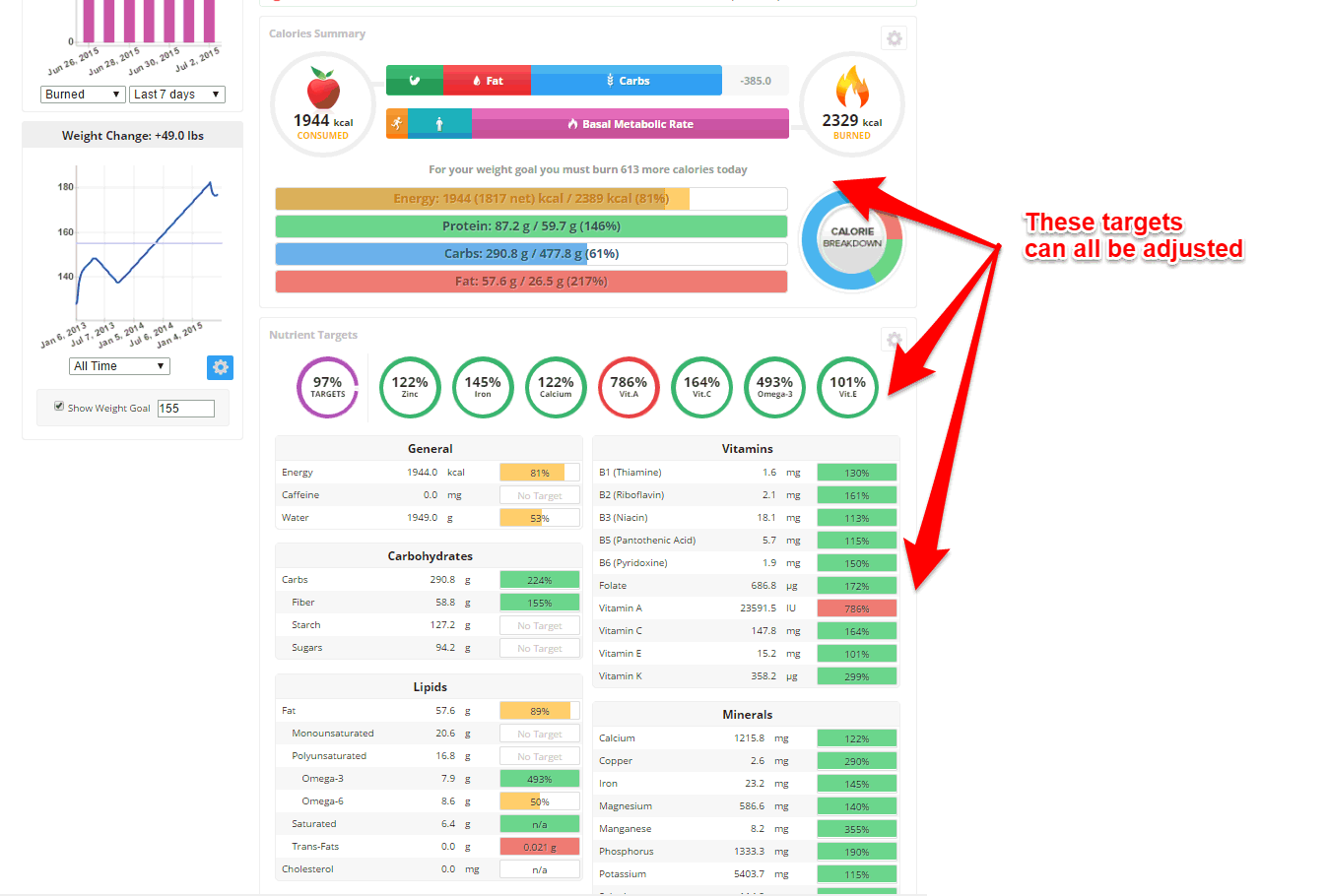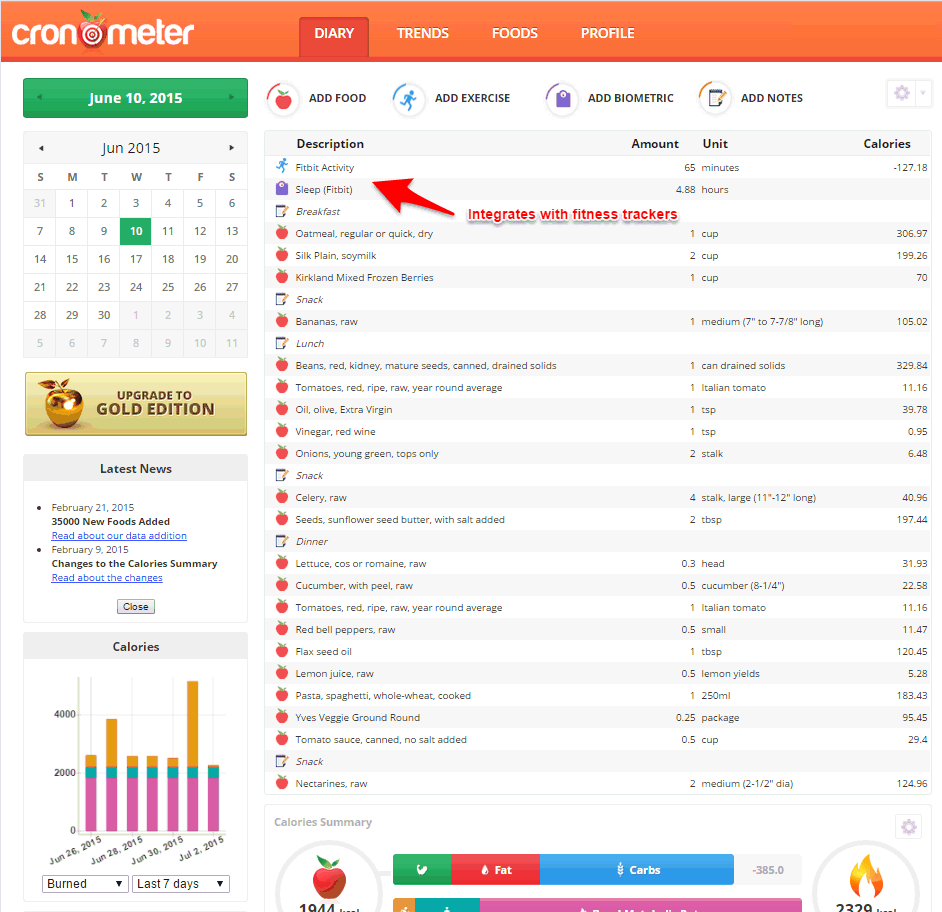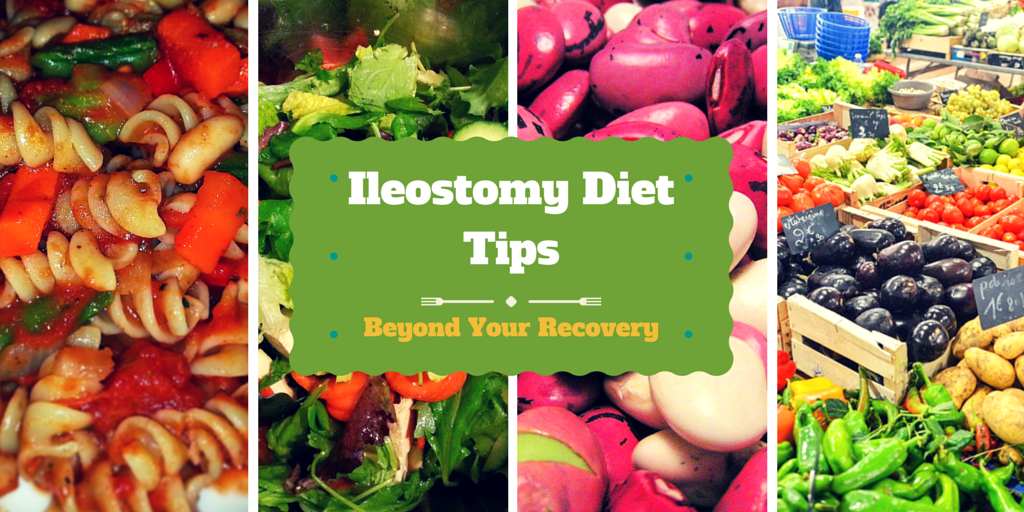One of the things I do from time to time is to audit my diet to see if I’m getting in enough nutrients from the food I eat. It was especially important for me to do this while I was in a Crohn’s flare, but it also came in handy after my ostomy surgery.
In this post, I’ll explain how to do this.
Table of Contents
Intro
You might have noticed, in several of my “What I Ate” posts, that I include a screenshot of what my nutrient totals looked like for that meal.
One of the tools I use to keep track of what I eat is Cron-o-meter, although there are other websites and apps that do the same thing.
I’ll be showing you how I use this specific website, but you can apply these tips to just about any nutrient tracker that has advanced options like adjustable nutrient targets or custom food entries.
Here are a few that come highly recommended. Some of them have mobile companion apps for your phone or tablet, so find one that suits your lifestyle best.
Also, keep in mind that some offer paid options that give you extra features.
www.cronometer.com
www.myfitnesspal.com
www.fatsecret.com
Alternatively, and more preferably, you should look for privacy-focused food trackers and open-source food trackers since most of the major sites will sell or use your personal data.
Why Track Your Nutrients?
Don’t remember when I started using Cron-o-meter, but I’m willing to bet that it was around 2009.
I started using their Windows version (which is still available to download), but it became way more convenient to use after they launched a web version and mobile apps to go with it.
I’ve used both the web and Android version, but I favor the website on a large screen.
I decided to track my nutrient intake to make sure that my diet is balanced, but also because I knew that Crohn’s disease would likely lead to deficiencies that I wanted to keep on top of.
Even after many years, I still track my intake on occasion (usually to see what the values are for certain meals), and this was something I did quite often while recovering from my surgeries.
Setting Nutrient Targets
I strongly suggest speaking with your doctor to see if your lab work looks good. You might also want to see if any of the medication you take interferes with nutrient absorption.
Doing this will make sure that you’ll be able to adjust your RDA (Recommended Dietary Allowance) to compensate for any deficiencies.
Most food tracking software will give you at least basic targets like calories, fat, carbohydrates and protein, although I highly recommend one that can track vitamins and minerals (a.k.a. micronutrients), too.
Keeping track of calories is usually something you’d need to do if you’re on a diet and are trying to lose weight, however, if you’re underweight because of an illness, it’s crucial to make sure that you are at least getting in adequate calories.
You’d be surprised how many or how few calories you consume until you start tracking them.
Eric, VeganOstomy
I’ve read stories of so many people with IBD who have lost weight and can’t seem to put any on (I was one of those people), but most of the time, the solution might simply be to increase the calories consumed.
Your protein intake will be important if you’re recovering from surgery, so make sure that you’re at least hitting the recommended targets for your age, sex, and activity level, to allow your body to heal faster.
As a general rule, if you’re eating enough whole foods to cover your caloric requirements, you’ll be getting more than enough protein – even on plant-based diets. Some patients, however, will be told to increase their protein intake while in recovery.
When I was recovering from my surgeries, I used a protein powder to give my diet a boost.
Nutritional targets will vary greatly from person to person, and factors like post-surgical diets will change the targets you’ll be setting up.
Assuming that I don’t have any special requirements related to my current health status, I adjust my RDA’s (recommended dietary allowance) based on the bioavailability from certain nutrients in plants.

For example, we know that non-heme iron from plants doesn’t absorb as well as heme-iron from meat, so we should try to get more than what the RDA states for iron if we are eating a plant-based diet.
Or, you may be on medication that is known to impair the absorption of certain vitamins or minerals, so you can set a higher RDA for those, too.
This might be something you can discuss with your doctor or dietitian, as you may want to also adjust these RDA’s to make up for deficiencies found through your lab work.
Below you’ll find an example of what I’ve set my RDA’s for, based on my desired calorie goal, age, sex and the fact that I’m vegan:

For more information on nutrient RDA’s for vegans, check out VeganHealth.org
Extras to Consider
Many of these nutrient trackers allow you to create new foods or customize existing foods in their database, so if you’re making meals from scratch, you could enter in the entire recipe and calculate portions as you consume them.
You can also track water consumption if that’s something you like to keep on top of. The nice thing about using something like Cron-o-Meter to track water, is that it includes water you’ve already consumed from food, which is often overlooked when you only track fluids you drink.
Info: While the databases in these programs are usually kept up to date, they don’t always contain complete nutritional information for every single food item. This is obvious when you look at packaged foods, as they aren’t required by law to test and list every single nutrient on food labels, so you may only notice some key nutrients listed, like sodium, fiber, potassium and vitamin C.
Good to know: Keep an eye out when entering foods that are fortified. You may not notice, but many foods have added iron, folic acid (listed as folate on these programs), b-vitamins or iodine in them. Eating rice that is not fortified, but entering fortified rice in your software, will screw up your totals.
If you are taking supplements, be sure to include them as a food entry, so you’re getting a more accurate picture of your intake.
You may be required to create a new “food” or “recipe” with all the details entered off the supplement’s label.
Info: When you’re doing this, keep an eye on the unit of measurements used; sometimes they are written in mg, IU, grams or mcg, so you’ll need to either convert them or change the unit type in the software you are using.
Putting It All Together
So what does all this mean? I find that keeping track of nutrient targets helps me to optimize my diet. I use this type of data together with my regular food diary to paint a more complete picture of my food intake.
By using this information, along with some of the tips I’ve offered about enhancing nutrient absorption, you can work towards taking charge of your diet in a more positive and deliberate way.
Further Reading
- Enhancing nutrient absorption
- Finding a Registered Dietitian
- FDA Food labeling guide.
- VeganHealth.org
- Iron nutrition and absorption: dietary factors which impact iron bioavailability.
Question: Do you track your nutrient intake? Which website or app do you use?








Hi,
I am happy with the basic Cronometer app.
Mostly because it is easier than using a notebook to track what I eat and drink in a day.
Thank you for the recommendation.
Great article. Notice that default cronometer target for vitamin A is not suitable for vegans. 3000 IU is for the preformed vitamin. Vegans should look at Retinol Activity Equivalent or use a vegan app like vegnt.com to track vitamin A.
Hi Helen, yes, RDA’s should be adjusted as mentioned in the article, but the amount will vary from person to person so I do suggest speaking with a registered dietician if there are any doubts about what to set it to.
Thanks for mentioning that you should discuss your nutrient intake and goals with a doctor ahead of time and to see if your medication will affect nutrient absorption. I am thinking about tracking my nutrients but worry that my medication will get in the way of my goal. I will speak with a doctor to see if my medication will interfere with my nutritional routine so that I can be prepared.
Hi Stefan,
I would continue to track nutrient intake, as it is good information to have regardless of any interaction with meds. If any meds are identified as being one that impedes the absorption of a specific nutrient, you will likely be asked to have more of that nutrient to make up for it.
Wow, Eric, this will be so helpful for me anyways. Thank you for always posting where to go to view them also.
Nice read! Thanks for the information.More power to your blogging career
Thank you for reading!